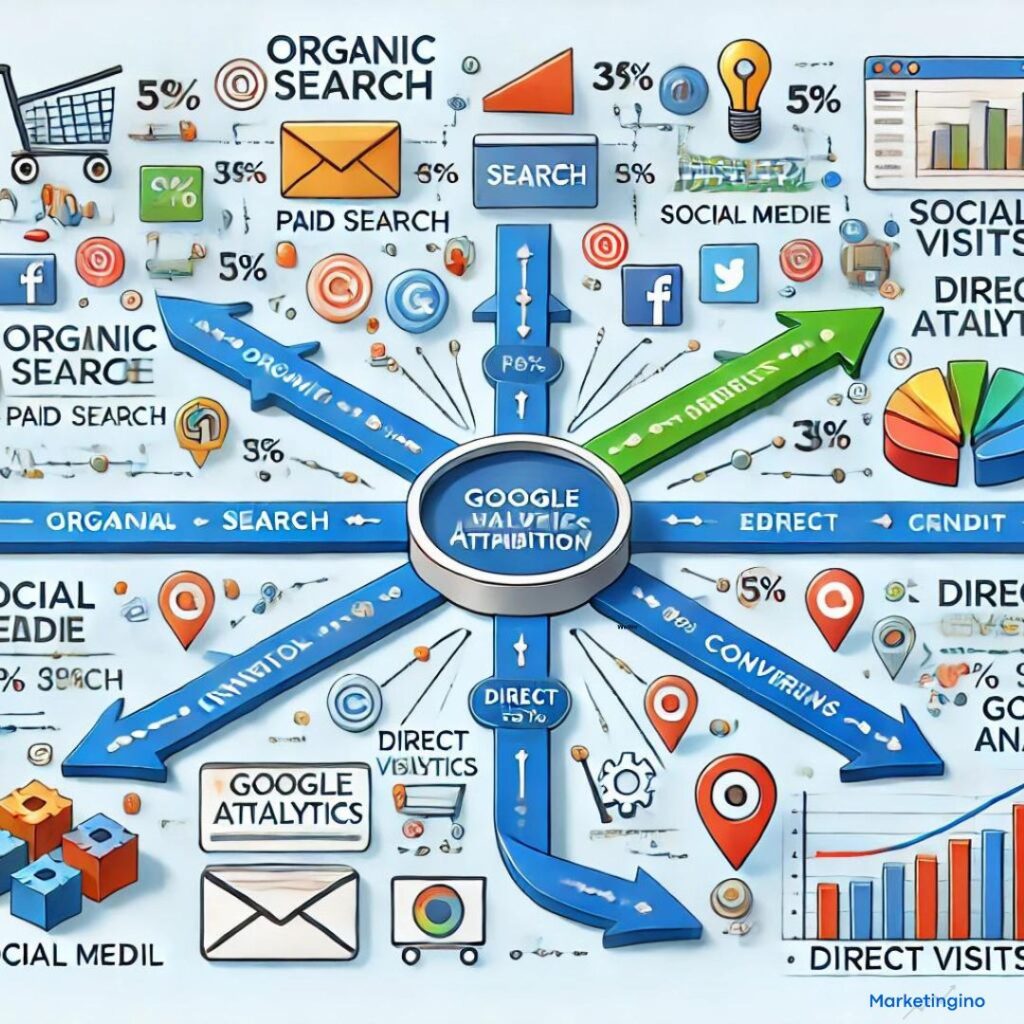In the complex world of digital marketing, understanding how different advertising channels contribute to conversions is crucial for optimizing marketing strategies and budgets. Cross-channel attribution in Google Analytics provides a solution by attributing a percentage of a conversion to all channels with touchpoints. This article explores the concept of cross-channel attribution, its importance, how it works in Google Analytics, and the challenges marketers face.
What is Cross-Channel Attribution?
Cross-channel attribution is a model that assigns credit for a conversion to multiple advertising channels that a user interacted with before completing a desired action, such as making a purchase or signing up for a newsletter. Unlike traditional single-touch attribution models, which give full credit to one channel (e.g., the last click), cross-channel attribution recognizes the contribution of all touchpoints in the customer journey.
Importance of Cross-Channel Attribution
Understanding the role of each channel in driving conversions is essential for several reasons:
- Accurate Measurement: It provides a more accurate picture of how different marketing efforts contribute to conversions, helping marketers understand the true impact of each channel.
- Optimized Spending: By identifying the most effective channels, marketers can allocate budgets more efficiently, ensuring that resources are invested in the strategies that yield the best returns.
- Improved Strategy: Insights from cross-channel attribution help in refining marketing strategies, creating more cohesive and effective campaigns across all channels.
How Cross-Channel Attribution Works in Google Analytics
Google Analytics offers several attribution models that distribute credit for conversions across different touchpoints. Here’s how it works:
- Data Collection: Google Analytics tracks user interactions across various channels, such as organic search, paid search, social media, email, and direct visits.
- Attribution Models: Marketers can choose from different attribution models in Google Analytics, each with its method of credit distribution:
- Last Interaction: Assigns all credit to the last touchpoint before conversion.
- First Interaction: Assigns all credit to the first touchpoint.
- Linear: Distributes credit equally across all touchpoints.
- Time Decay: Gives more credit to touchpoints closer in time to the conversion.
- Position-Based: Assigns 40% credit to the first and last touchpoints, and the remaining 20% is distributed equally among the middle touchpoints.
- Data-Driven: Uses machine learning to distribute credit based on the observed impact of each touchpoint.
- Analysis: By using these models, marketers can analyze the contribution of each channel and touchpoint, gaining insights into the customer journey and the effectiveness of their marketing efforts.
Challenges in Cross-Channel Attribution
Implementing and utilizing cross-channel attribution comes with several challenges:
- Data Silos: Integrating data from different channels and ensuring its accuracy can be difficult, especially when using multiple platforms and tools.
- Complexity: The customer journey is often non-linear and complex, making it challenging to track and attribute touchpoints accurately.
- Changing Behaviors: Consumer behaviors and interactions with channels can change rapidly, requiring constant updates and adjustments to attribution models.
- Technical Expertise: Setting up and interpreting cross-channel attribution models in Google Analytics requires a certain level of technical expertise and understanding of data analytics.
Future of Cross-Channel Attribution
As technology and consumer behaviors evolve, cross-channel attribution models are expected to become more sophisticated. Advances in artificial intelligence and machine learning will likely enhance the accuracy and granularity of these models, providing even deeper insights into the customer journey. Additionally, the integration of offline and online data will further refine attribution, offering a holistic view of marketing effectiveness.
Cross-channel attribution is a powerful tool for modern marketers, providing a nuanced understanding of how different advertising channels contribute to conversions. By leveraging this model in Google Analytics, businesses can optimize their marketing strategies, allocate budgets more effectively, and ultimately drive better results. Despite the challenges, the benefits of cross-channel attribution make it an indispensable component of data-driven marketing in today’s digital landscape.




